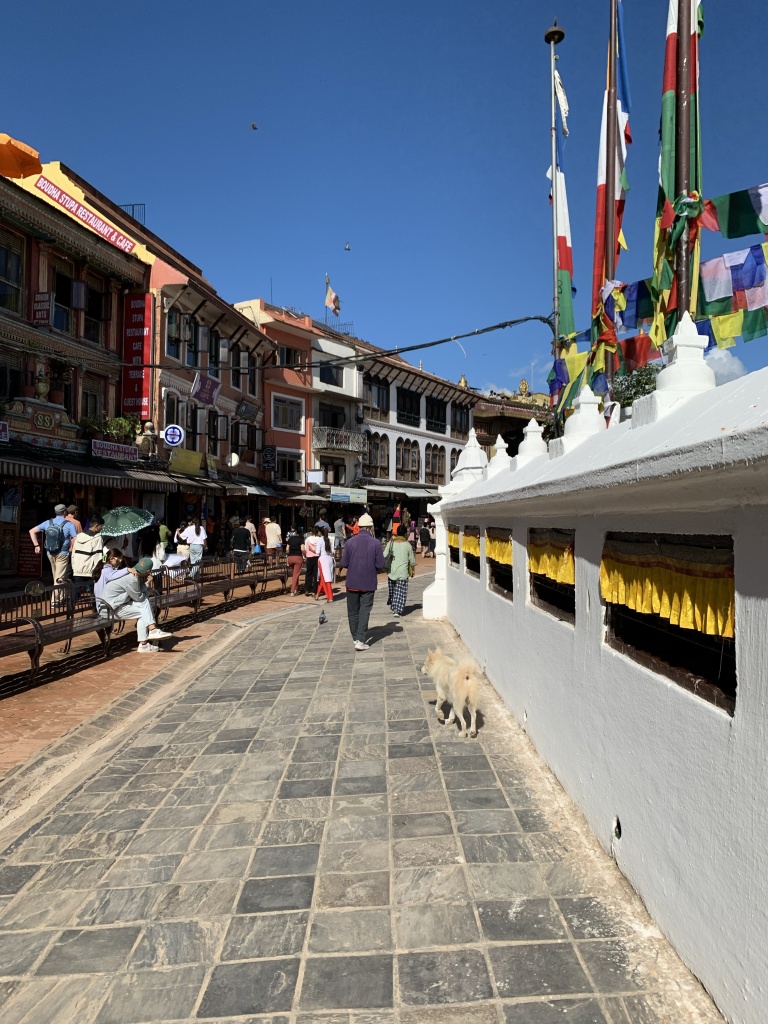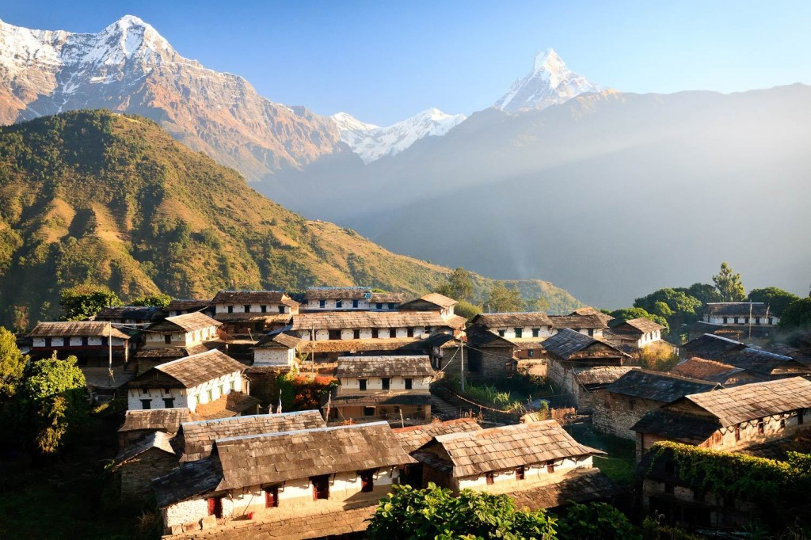On day 2, most of the travellers (other than a couple who weren’t feeling well, sadly!) set out into Kathmandu to visit 2 iconic sites: the Pashupatinath and Boudhanath temples.
Pashupatinath is a vast Hindu temple complex, classified as a United Nations World Heritage site in 1979, where people come to worship and cremate dead loved ones. Visiting it was a fascinating and also emotional experience. It has to be said that it felt quite strange (intrusive?) to be watching the mourners at the ghat, who wash the bodies of their loved ones in the Bagmati River before transferring them to the funeral pyres. At the same time, it was such a beautiful chance to witness an aspect of life that we will all have to deal with sooner or later.






We were feeling philosophical and possibly a little sombre as we moved on to something completely different: the Boudhanath Stupa (a mound-like structure usually containing relics and used as a place of meditation). It’s an important place in Tibetan Buddhism, a UNESCO World Heritage site, and one of the largest stupas in Nepal and the world. We had the chance to walk around it (always clockwise!) and turn the prayer wheels, chanting the mantra “Om mani padme hum.”



We also made a stop to learn about Thangka art—a beautiful, intricate style of Tibetan Buddhist painting on cotton or silk (usually showing a Buddhist deity, scene, or mandala). At Buddha Nature Thangka (formerly Tushita Heaven), we received an overview of Tibetan Buddhism, the training process, and the meaning of the symbols and colours in a thangka painting. The work can sometimes take months to complete.


Couple that with lunch at the great Pasa Deli just across from the stupa, and it was a terrific day that covered so much ground!
Our tour was led by the hugely knowledgeable Vinod Shakya of Myths and Mountains, and it would be impossible to reproduce everything he taught us about Kathmandu and Nepal history and religion. Please contact him if you’re ever in Kathmandu! Thank you so much, Vinod!



